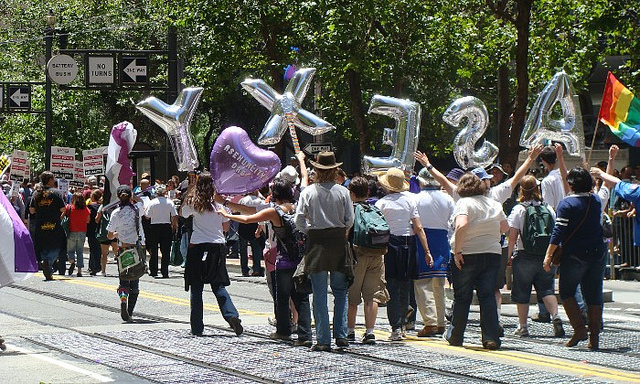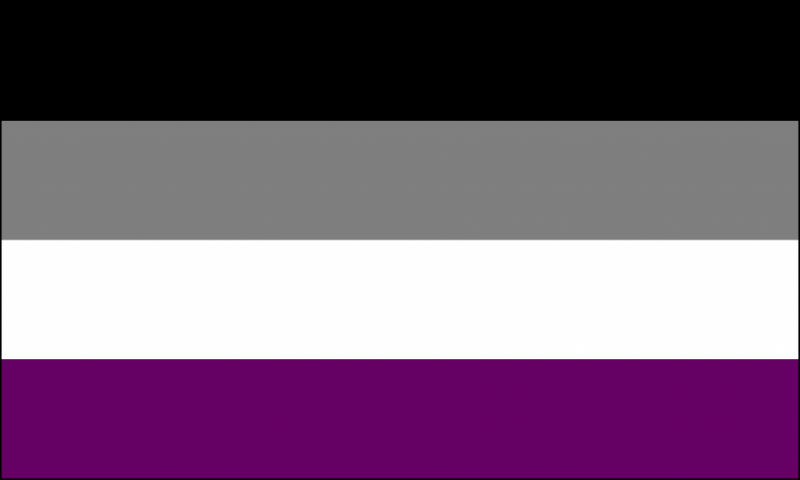QuASA Brings Much Needed Asexual Awareness To USC

So many times in high school my friends and I would speculate: "That person’s not gay? Or they won’t say they are? Maybe they’re really just asexual." I would pity those people, but I never really understood why -- until I started digging a bit deeper into myself and my own identity.
I’ve gotten extremely used to identifying as "queer." The Queer and Ally Student Assembly (QuASA) at USC helped me do that, and while I personally love "queer" as a catch-all for being "not straight," I would go on to say that I specifically identify as pansexual, because what’s underneath someone’s clothes, for that matter, never mattered in my ability to like someone. And yet, pansexual never fully felt like home.
I just never thought about specifically why. Until I actually googled the word "asexual."
About a year ago, I started dating someone who I liked very much. We would do normal dating things -- go to the movies, eat food, hang out -- and from the outside it probably looked like things were progressing naturally. And for me, they were, because all the emotions were there in my mind: excitement, desire, the typical queer-girl feelings that brew at the start of any romance.
But in reality, I would barely touch or kiss them, even, and the fear that something was seriously wrong with me was creeping up like an itch I couldn’t scratch but would really have to at some point, a fear that I was broken. It got to the point where I convinced myself I would have to be intoxicated to be sexually involved with them, and that was an all-time low.
I broke it -- whatever it was -- off. I went to “Drop In and Chat,” an amazing program at the LGBT Resource Center on campus where you can have a walk-in session with a professional from the counselling center. I explained to the psychologist what I thought was wrong with me, that I might be, dare I say it, sexually broken. He decided to take me on as a patient once a week.
It was my therapy that finally convinced me to face my fears and google the word I pitied so much. The third result was something called AVEN, the Asexual Visibility and Education Network. I immediately read this:
“An asexual is someone who does not experience sexual attraction. Unlike celibacy, which people choose, asexuality is an intrinsic part of who we are. There is considerable diversity among the asexual community; each asexual person experiences things like relationships, attraction, and arousal somewhat differently. Asexuality does not make our lives any worse or any better, we just face a different set of challenges than most sexual people.”
And suddenly, it hit home. I immediately felt less alone, less broken. This was a thing. The AVEN message board community is somewhere around 35,000 members, and it is only one of several online resources for asexuals, “aces” for short, to gather. Blogging hubs like Tumblr (such as Asexual Advice) and Wordpress (like The Asexual Agenda) are common as well.

This year, I served as Executive Director of QuASA at USC. Ironically, even as I was discovering my own graysexual (someone who identifies between sexual and asexual) identity, programming Asexual Awareness Week back during Coming Out Month in October had never even crossed my mind. I hadn’t seen asexuality addressed in depth in all my years of QuASA, so I only knew that "asexual" fell somewhere under the LGBTQ+ umbrella. It was only ever casually mentioned, as in "and don’t forget about asexual!" But we would. We would super forget about it, and alas never go back to it.
Something finally cracked back in February -- this had to be talked about. I never wanted anyone at USC to feel like I had felt ever again, and to do that I was going to bring asexuality awareness to campus. I told my plans to one of my closest friends, and was surprised to hear they identified as demisexual, or someone who only experiences sexual attraction through an emotional bond. There was bound to be more people like us on such an asexual spectrum around, and if not, such a program would bring education to the sexual community. It just took some work to get there.
Because I was scared. Because I had already done so much coming out this year, as openly queer to my family, colleagues, anyone who asked. Because I couldn’t get the feeling out of my head that I was not "completely" sexual.
So I invited Sara Beth Brooks, a graduate student at Cal-State Fullerton who founded Asexual Awareness Week in 2010, to USC for a workshop on discussion we’re calling Asexuality 101. It’s taking place during our QuASA PrideFest 2014, on April 28th, 6pm in the University Religious Center 104.
You might have a lot of questions about all of this, like I did, and I encourage you to bring them to the event. I encourage you to learn more about a grazed-over part of the queer community, another identity, one that more and more people are calling home. An identity that I am calling home.
And gosh darn, it feels really good to be home.
Reach Contributor Becca Grumet here. Check out USC QuASA here.



